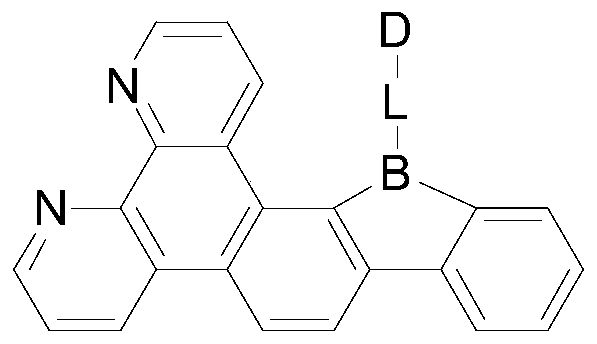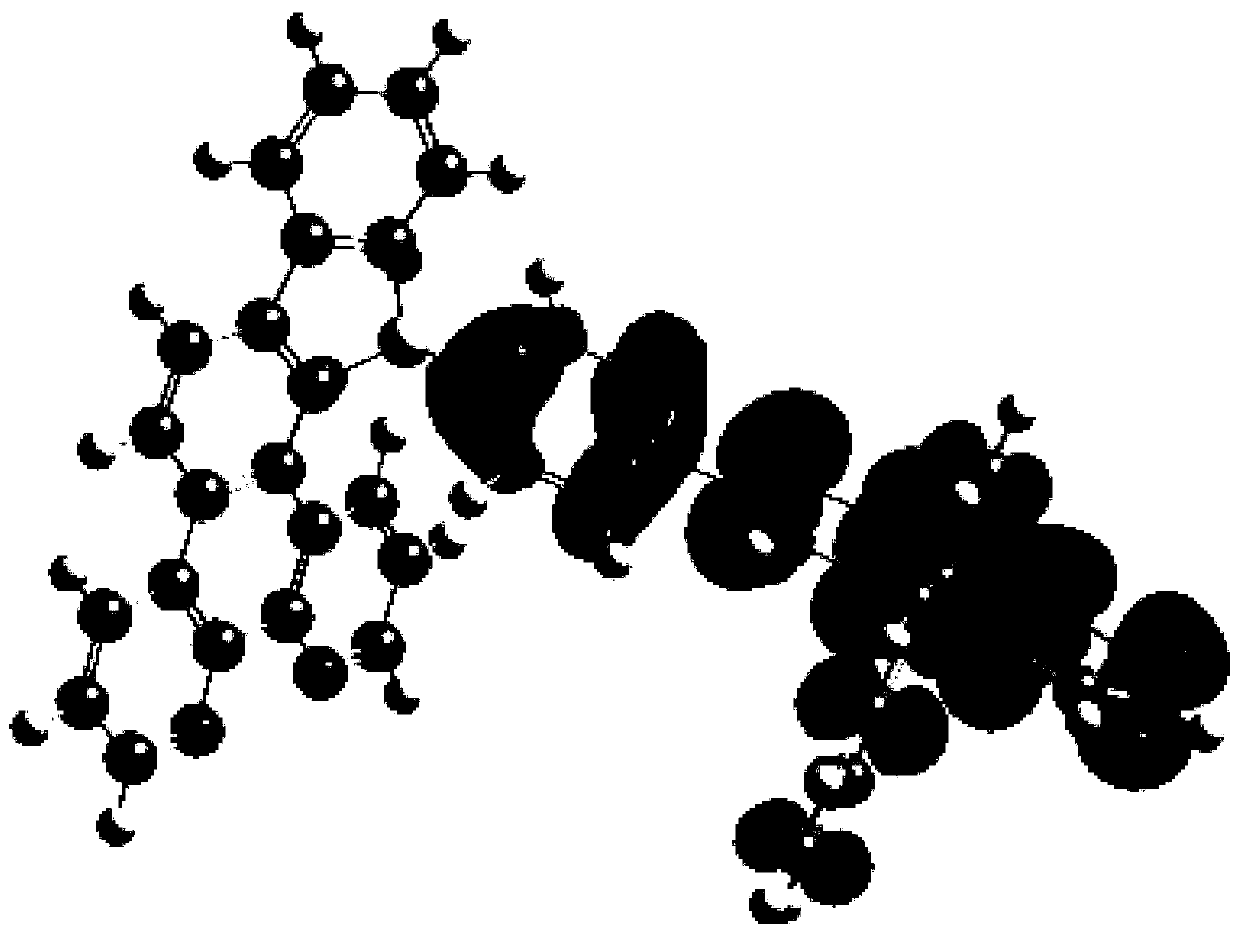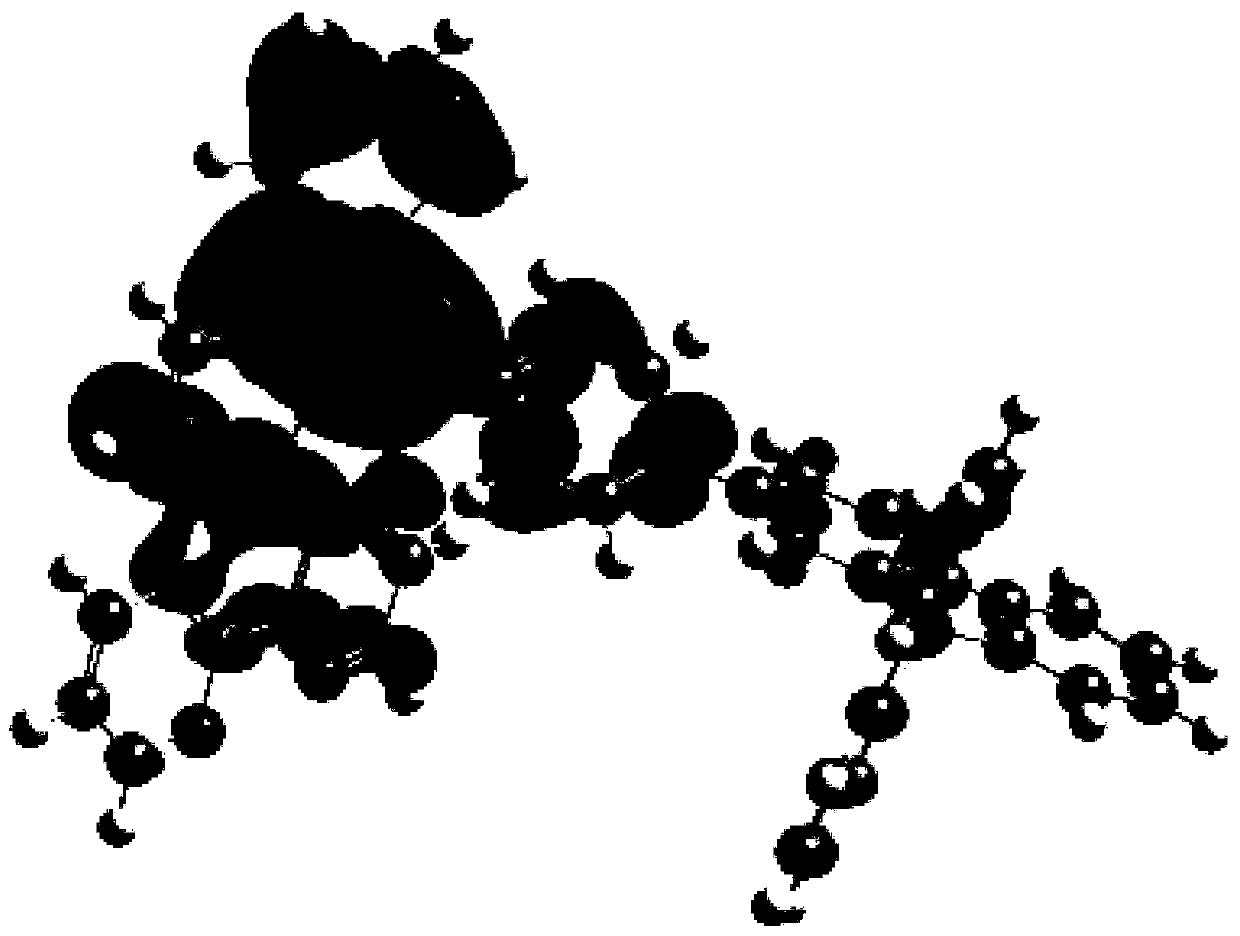Compound, display panel and display device
A compound and connection position technology, applied in the field of organic electroluminescent materials, can solve the problems of decreased luminous efficiency, decreased glass transition temperature, broken, etc., to achieve the effects of weakening charge transfer, improving device efficiency, and shortening conjugation length.
- Summary
- Abstract
- Description
- Claims
- Application Information
AI Technical Summary
Problems solved by technology
Method used
Image
Examples
Embodiment 1
[0096] Synthesis of compound M1
[0097] The synthetic route of compound M1 is as follows.
[0098]
[0099] The specific synthesis steps of compound M1 are as follows.
[0100]
[0101]Dissolve 24.5g (0.1mol) of aminobenzophenanthroline in 100ml of dichloromethane, and slowly add 100ml of dichloromethane solution with 18.7g (0.1mol) of NBS dropwise under nitrogen atmosphere, and stir at room temperature 4h. After stopping the reaction, quench the unreacted NBS with 5ml of water in the reaction solution, and use (50ml*3) dichloromethane to quench the organic phase. After the organic phase is rotary evaporated to dryness, use 100ml of n-hexane to reflux for beating overnight, and cool to After suction filtration at room temperature, 30.7 g of B (99.5%, 95 mmol, yield 95%) was obtained.
[0102] 1 H NMR (500 MHz, chloroform) δ 8.80 (s, 2H), 8.14 (s, 2H), 7.46 (s, 1H), 7.58–7.19 (m, 3H), 4.48 (s, 2H).
[0103] 13 C NMR (125MHz, common NMR solvent) δ150.32(s), 148.79(s...
Embodiment 2
[0121] Synthesis of compound M2
[0122]
[0123] Compound F2 (9.24g, 28.7mmol), Compound E (13.2g, 37.74mmol), Pd(PPh3)4 (1g, 0.87mmol), K 2 CO 3 (12.05g, 86.86mmol), distilled water (23ml), toluene (113.64ml), ethanol (23ml) were mixed and stirred under reflux for 8h, the mixture was cooled to room temperature, distilled water was added, extracted with EA and dried with magnesium sulfate, concentrated silica gel Column separation gave compound M2 (10.5 g, 18.8 mmol, yield 56%).
[0124] 1H NMR (500MHz, chloroform) δ8.80 (dd, J = 7.5, 1.4Hz, 2H), 8.14 (dd, J = 7.5, 1.4Hz, 2H), 8.09 (d, J = 7.5Hz, 1H), 7.95 (d,J=1.6Hz,1H),7.93(d,J=1.4Hz,1H),7.92–7.87(m,3H),7.83(s,1H),7.81(s,1H),7.80(d, J=1.6Hz,1H),7.79–7.76(m,3H),7.75–7.71(m,3H),7.62(td,J=7.5,1.4Hz,1H),7.53–7.46(m,3H),7.44 –7.35(m,4H),7.27–7.20(m,4H).
[0125] 13 C NMR (125MHz, common NMR solvent) δ150.32(s), 149.81(s), 147.58(s), 147.28(s), 146.01(s), 145.52(s), 144.83(s), 143.14(s ), 141.93(s), 139.30(s), 138.82(s...
Embodiment 3
[0127] Synthesis of Compound M3
[0128]
[0129] Compound F3 (9.7g, 28.7mmol), compound E (13.2g, 37.74mmol), Pd (PPh3) 4 (1g, 0.87mmol), K2CO3 (12.05g, 86.86mmol), distilled water (23ml), toluene (113.64 ml), ethanol (23ml) were mixed and stirred under reflux for 8h, the mixture was cooled to room temperature, added distilled water, extracted with EA and dried with magnesium sulfate, concentrated and separated on a silica gel column to obtain compound M3 (10.78g, 18.8mmol, yield 56 %).
[0130] 1 H NMR (500MHz, chloroform) δ8.80 (dd, J = 7.5, 1.4Hz, 2H), 8.14 (dd, J = 7.5, 1.4Hz, 2H), 8.09 (d, J = 7.5Hz, 1H), 7.95 (d,J=1.6Hz,1H),7.93(d,J=1.4Hz,1H),7.92–7.87(m,3H),7.83(s,1H),7.81(s,1H),7.80(d, J=1.6Hz,1H),7.79–7.76(m,3H),7.75–7.71(m,3H),7.62(td,J=7.5,1.4Hz,1H),7.53–7.46(m,3H),7.44 –7.35(m,4H),7.27–7.20(m,4H).
[0131] 13 C NMR (125MHz, common NMR solvent) δ150.32(s), 149.81(s), 147.58(s), 147.28(s), 146.01(s), 145.52(s), 144.83(s), 143.14(s ), 141.93(s), 139.30(s), ...
PUM
 Login to View More
Login to View More Abstract
Description
Claims
Application Information
 Login to View More
Login to View More - R&D
- Intellectual Property
- Life Sciences
- Materials
- Tech Scout
- Unparalleled Data Quality
- Higher Quality Content
- 60% Fewer Hallucinations
Browse by: Latest US Patents, China's latest patents, Technical Efficacy Thesaurus, Application Domain, Technology Topic, Popular Technical Reports.
© 2025 PatSnap. All rights reserved.Legal|Privacy policy|Modern Slavery Act Transparency Statement|Sitemap|About US| Contact US: help@patsnap.com



